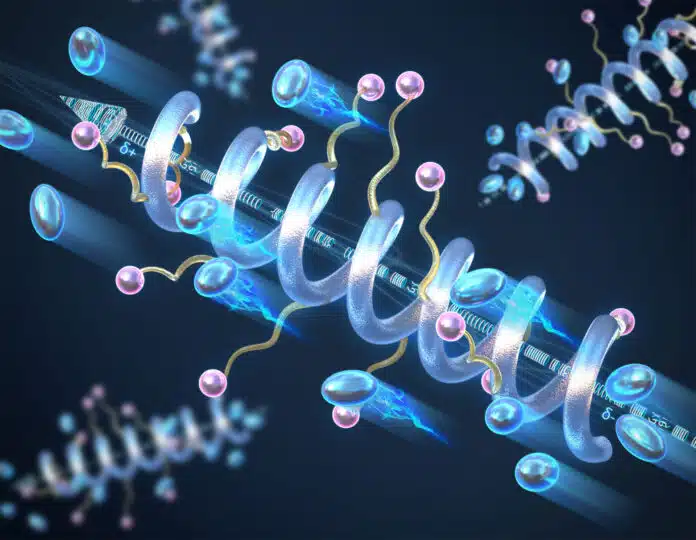
By Amit Malewar 9 Aug, 2024
Collected at: https://www.techexplorist.com/helical-structure-improves-solid-state-electrolyte-conductivity-stability/87088/
Solid-state electrolytes have garnered significant attention for their potential use in energy storage systems and the advancement of solid-state batteries. These materials offer a safer alternative to the conventional liquid electrolytes used in present-day batteries.
However, there is a pressing need for innovative approaches to enhance the performance of current solid polymer electrolytes for them to be considered viable for the next generation of materials.
Researchers at the University of Illinois Urbana-Champaign have delved into the impact of helical secondary structure on the conductivity of solid-state peptide polymer electrolytes. Their findings reveal that the helical structure significantly boosts conductivity compared to the “random coil” counterparts.
Additionally, they have demonstrated that longer helices result in higher conductivity and that the helical structure enhances the overall stability of the material at varying temperatures and voltage levels.
“We introduced the concept of using secondary structure—the helix—to design and improve upon the basic material property of ionic conductivity in solid materials,” says Professor Chris Evans, who led this work. “It’s the same helix that you would find in peptides in biology; we’re just using it for non-biological reasons.”
Polymers generally assume random configurations, but by controlling and designing the polymer’s backbone, it can adopt a helical structure similar to DNA. Consequently, the polymer will possess a macrodipole moment, which involves a significant separation of positive and negative charges on a large scale.
As the helix extends, the individual peptide units’ small dipole moments combine to create the macrodipole, enhancing the conductivity and dielectric constant of the entire structure. This improvement in charge transport and electrical energy storage is proportional to the length of the peptide, resulting in higher conductivity for longer helices.
“These polymers are much more stable than typical polymers – the helix is a very robust structure. You can go to high temperatures or voltages compared to random coil polymers, and it doesn’t degrade or lose the helix. We don’t see any evidence that the polymer breaks down before we want it to,” Evans adds.
Because it is made from peptides, the material can be broken down into individual monomer units using enzymes or acid when the battery has failed or is at the end of its useful life. Through a separation process, the starting materials can be recovered and reused, thus reducing their environmental impact.
Chris Evans is affiliated with the Materials Research Laboratory (MRL) and the Beckman Institute for Advanced Science and Technology in Illinois.
Journal reference:
- Yingying Chen, Tianrui Xue, Chen Chen, Seongon Jang, Paul V. Braun, Jianjun Cheng & Christopher M. Evans. Helical peptide structure improves conductivity and stability of solid electrolytes. Nature Materials, 2024; DOI: 10.1038/s41563-024-01966-1

Leave a Reply